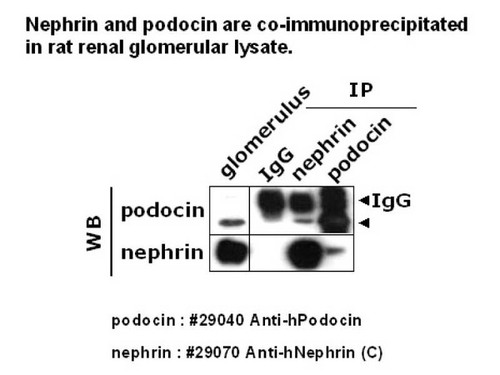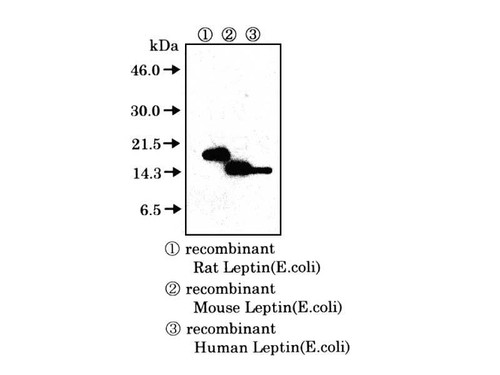The kidney is an important organ that maintains a homeostasis of body-fluid and nutrition. The capillary walls of renal glomeruli allow the efficient removal of the metabolic waste (filter) and conservation of essential circulating proteins, such as albumin (barrier). The filtration barriers are composed of three layers: a fenestrated endothelium, the glomerular basement membrane, and the highly specialized epithelial cells, podocytes. The podocytes elaborate numerous cellular processes and the terminal portions, called foot process, cover the outmost surface of the glomerular basement membrane. The neighboring foot processes are aligned in an interdigitating fashion while leaving a filtration slit around 20-50nm in wide that is bridged by an electron dense membrane-like structure, the slit diaphragm. Recent studies with familial nephrotic syndrome and genetically manipulated mice models demonstrated the genetic defects of the slit diaphragm proteins (nephrin, podocin, etc) cause massive proteinuria (nephrotic syndrome) and eventually progress the end stage renal diseases. The observations indicate that regulation of the slit diaphragm integrity is crucial for maintenance of the filtration barrier function and podocyte viability. Nephrin has been identified as a disease causing molecule responsible for congenital nephrotic syndrome of Finnish type, in which the proteinuria starts in utero or immediately after birth. It is an immunoglobulin-like transmembrane adhesion protein having eight Ig motifs. Nephrin forms a structural backbone of the slit diaphragm through a head-to-head, trans-homo-interaction at the N-terminal ectodomains. In addition to the structural function, nephrin serves as a signaling molecule that mediate an adaptive morphological regulation through the remodeling of actin cytoskeletons; the C-terminal cytoplasmic domain is tyrosine-phosphorylated by Src family kinase (Fyn) and the phosphorylated nephrin associates with an SH2 adaptor protein (Nck), thereby allowing the sable anchorage of the slit membrane complex to the actin cytoskeleton in the foot processes. Under proteinuric conditions, nephrin is down-regulated and is apically dislocated. For research use only, not for use in diagnostic procedures.
- application:
- IHC, WB, IP
- Catalog number:
- 29070
- Datasheet:
- formulation:
- Lyophilized product from 1% BSA in PBS containing 0.05% NaN3
- immunogen:
- Synthetic peptide of the C-terminal part of Human Nephrin
- MSDS:
- notes:
- For research use only, not for use in diagnostic procedures.
The datasheet for this product (see above) is intended to serve as an example only. Please refer to the datasheet provided with the antibody for precise details. - Other names:
- Please see datasheet
- Protocol:
- purification:
- Purified with antigen peptide
- size:
- 100 µg
- specificity:
- Cross-reacts with rat
- storage:
- Lyophilized product, 5 years at 2 - 8 °C; Solution, 2 years at -20 °C.
- Species:
- Human
- Host:
- Rabbit










